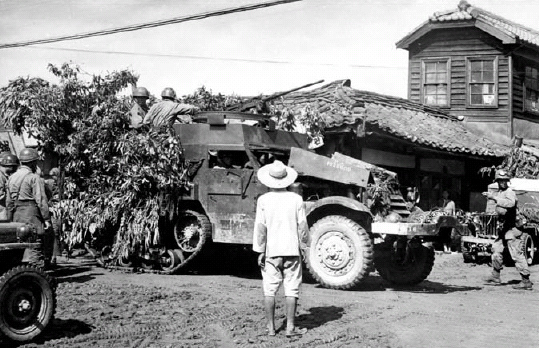
Korea had been occupied by US and Soviet forces in 1945, with the Red Army north of the 38th Parallel, and the US Army to the south. With the onset of the Cold War, both areas set up their own rival governments, with promises to unify the country under each government’s respective control. The US Army largely abandoned South Korea in 1949 except for small training detachments. Although the Republic of Korea (ROK) had begun to set up its own ROK Army (ROKA), the US government was reluctant to provide it with offensive weapons more powerful than small arms because of concerns that the Syngman Rhee government would attempt to reunify the country by force. The Soviet Union and China in the meantime had equipped the NKPA with the full understanding that the Kim Il-Sung government had the same ambitions. Feckless US diplomacy led Stalin and Mao to conclude that Korea was outside the US sphere of influence after the 1949 troop withdrawals, and so gave the North Koreans the green light to initiate the war. War planning was conducted with Soviet assistance. Under the cover of peace negotiations, on June 12–23, the NKPA moved seven infantry divisions and the 105th Armored Brigade to within 10–15km (6–9 miles) of the 38th Parallel separating the two zones. The plan was based on a marked superiority of the NKPA over the ROKA, with a 2:1 advantage in troops and rifles, a 7:1 advantage in machine guns, and a 13:1 advantage in submachine guns. The ROKA had no significant field artillery or tanks. The June plan, completed with Soviet assistance, expected that the NKPA would advance 15–20km (9–12 miles) per day and that the campaign would last 22–27 days.

The ROK Army had no tanks and only light armored vehicles. This M3 half-track of the 1st Capitol Division is seen in action on July 7, 1950, during the opening phase of the conflict. It has a locally improvised .50-cal. heavy machine-gun pulpit on the right side. (NARA)



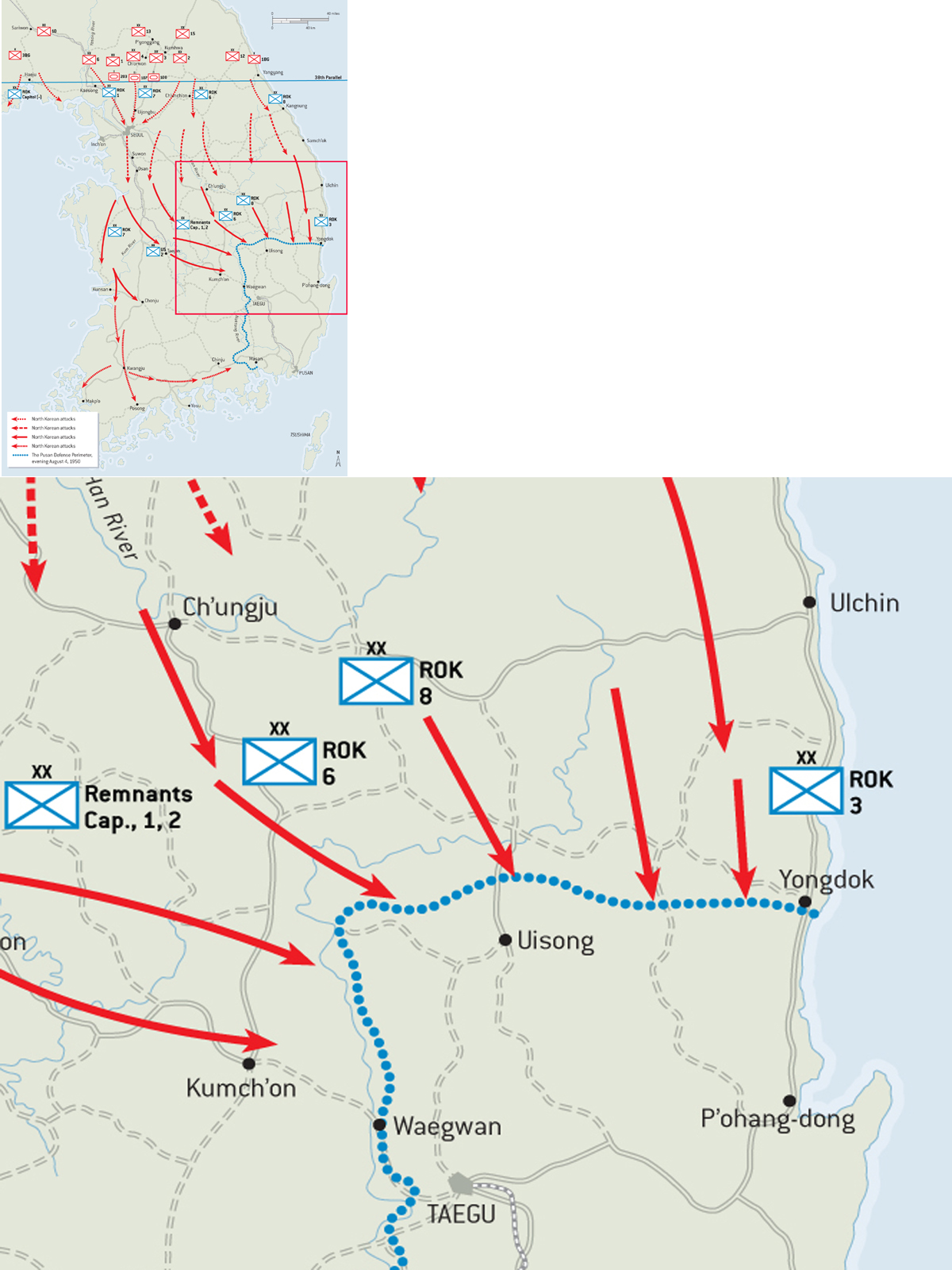

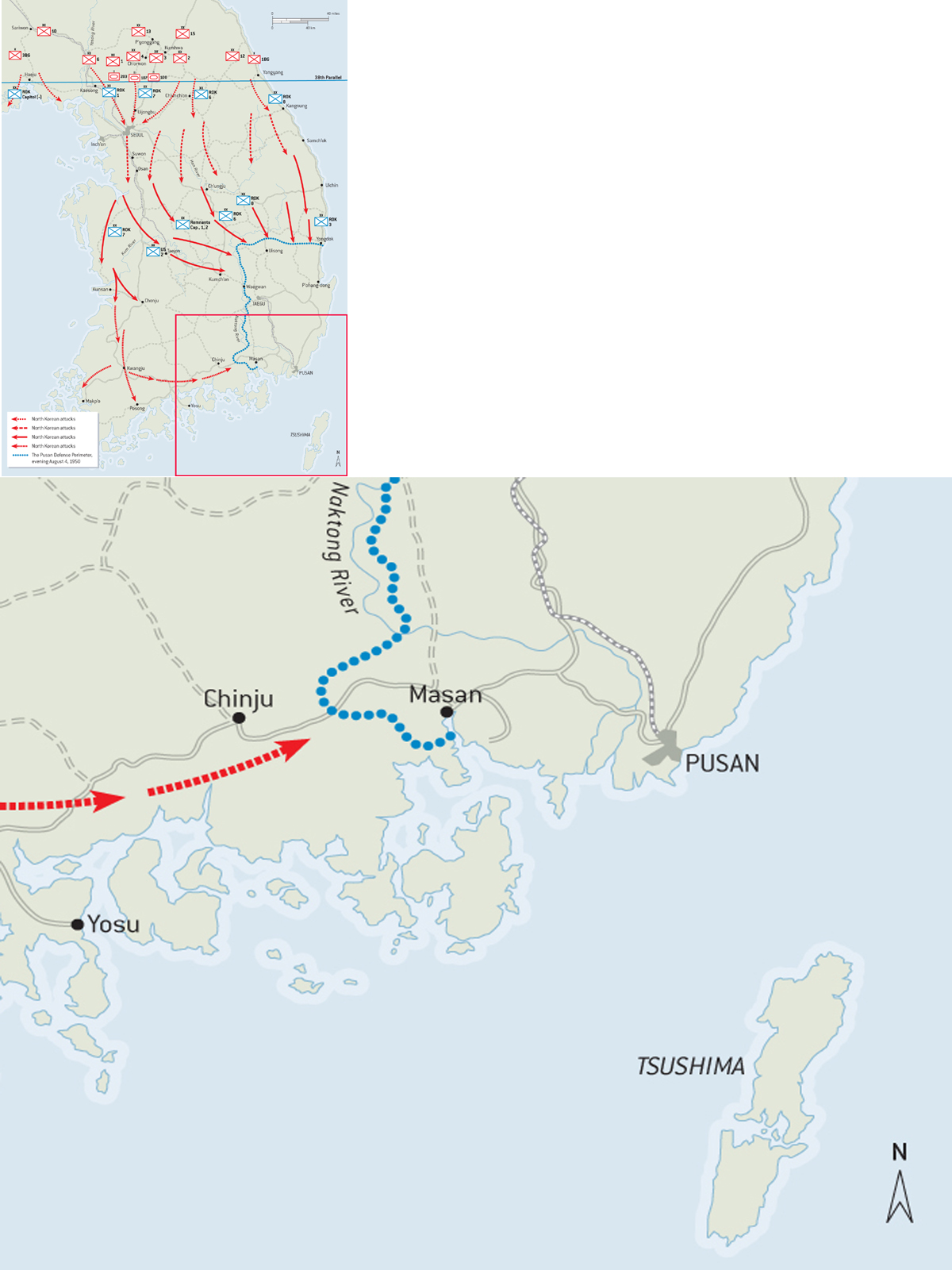
The North Korean invasion. June 25–August 4, 1950.
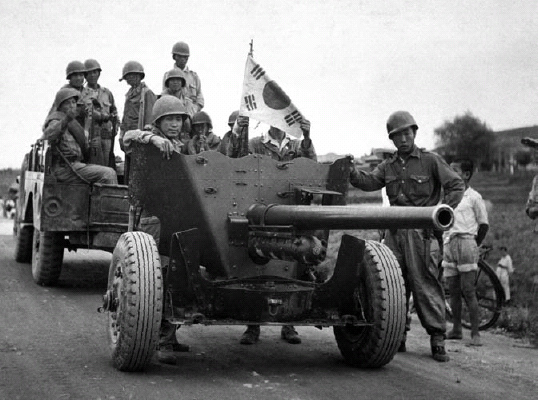
The principal anti-tank weapon of the ROK Army was the towed 57mm anti-tank gun, an American copy of the British 6-pdr. This gun had limited capability against the T-34-85, except against the side armor. This ROK Army 57mm gun is being towed by a ¾-ton truck during the evacuation of Suwon airbase in 1950. (NARA)
While the NKPA tank force seems puny by today’s standards, in 1950 this was the most formidable force in Asia except for that of the Soviet Army. Japan’s armored force had been destroyed in the war, and China’s force was a motley collection of captured Japanese and American tanks. The US Army had no substantial tank force in occupied Japan beyond four companies of M24 Chaffee light tanks, and had withdrawn the medium tanks used in the occupation of South Korea in 1949. South Korea had no tank force and its only armored vehicles were 37 M8 armored cars and a small number of M3 half-tracks of a cavalry regiment of the 1st Capitol Division in Seoul. Anti-tank weapons were poor and consisted of 140 ineffective 57mm anti-tank guns – an American copy of the British 6-pdr – and about 1,900 2.36in bazookas.
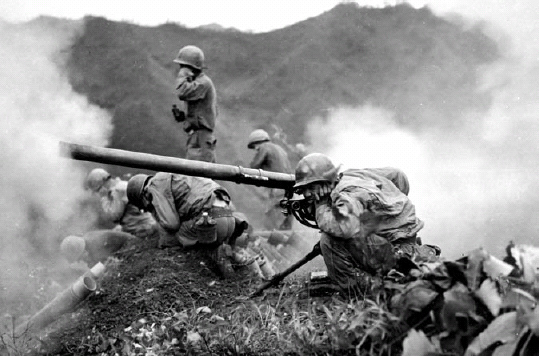
The standard US Army and Marine infantry support weapon in the Korean War was the M20 75mm recoilless rifle. This was often used in encounters with North Korean tanks, but was seldom effective, as its HE projectile had little armor-penetrating power. (NARA)
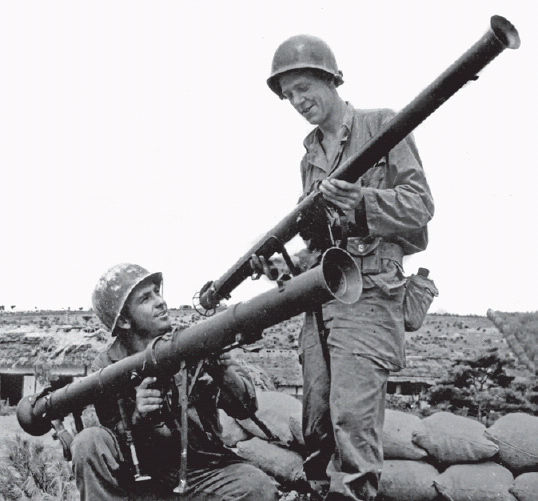
US and ROK infantry units in Korea at the start of the war were armed only with the M18 2.36in rocket launcher, seen here to the right, as their primary anti-tank weapon. It proved totally ineffective against the T-34-85. In early July, the first supplies of the larger M20 3.5in “super-bazooka,” seen here to the left, were airlifted to Korea, and first used in the battle for Taejon on July 20, 1950. (NARA)
The NKPA planned to use the 105th Armored Brigade as the spearhead of its invasion of South Korea. Korea is an extremely mountainous country, particularly along its eastern coast. The traditional invasion route has been along the western coast, as the mountains gradually give way to a coastal plain. Equally importantly, the South Korean capital of Seoul was located in this area, so it was the natural destination of the 105th Armored Brigade. Contrary to Soviet doctrine, the brigade did not fight as a single unit, but its regiments were doled out to support NKPA infantry divisions.